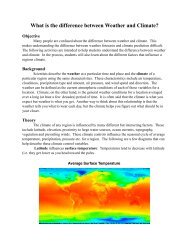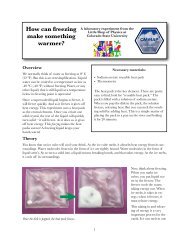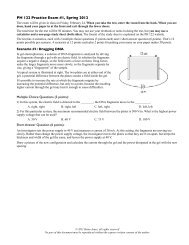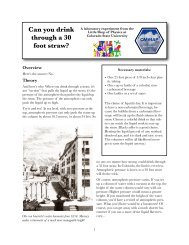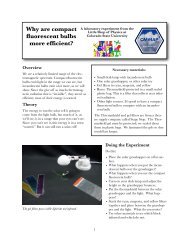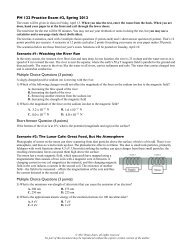Electromagnetic Waves Slides - Little Shop of Physics
Electromagnetic Waves Slides - Little Shop of Physics
Electromagnetic Waves Slides - Little Shop of Physics
You also want an ePaper? Increase the reach of your titles
YUMPU automatically turns print PDFs into web optimized ePapers that Google loves.
Basic Relationships<br />
The speed <strong>of</strong> electromagnetic waves<br />
A. depends on the wavelength<br />
B. depends on the photon energy<br />
C. is the same as the speed <strong>of</strong> sound<br />
D. is the same for all waves regardless <strong>of</strong> wavelength<br />
Basic Relationships<br />
A typical analog cell phone has a frequency <strong>of</strong> 850 MHz; a<br />
digital phone a frequency <strong>of</strong> 1950 MHz. Compared to the<br />
signal from an analog cell phone, the digital signal has<br />
! A. ! longer wavelength and lower photon energy<br />
! B. ! longer wavelength and higher photon energy<br />
! C. ! shorter wavelength and lower photon energy<br />
! D. ! shorter wavelength and higher photon energy<br />
Basic Relationships<br />
A radio tower emits two 50 W signals, one an AM signal<br />
at a frequency <strong>of</strong> 850 kHz, one an FM signal at a<br />
frequency <strong>of</strong> 85 MHz. Which signal has more photons per<br />
second? Explain.<br />
! A. ! The AM signal has more photons per second.<br />
! B. ! The FM signal has more photons per second.<br />
! C. ! Both signals have the same photons per second.<br />
22<br />
23<br />
24



